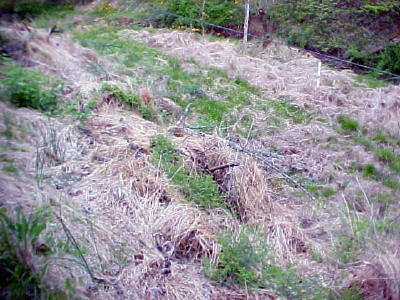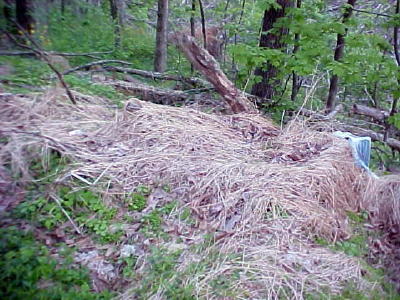
Stilt grass covers a bottom
Pine Creek near Hur, an area logged in 2003

The grass has spread along road banks,
creek bottoms and hillsides since last year
By Bob Weaver
READ 5-5-2004 "SOMETHING WICKED THIS WAY COMES - Japanese Stilt Grass Taking Over, Invasion Hits Calhoun"
Japanese stilt grass could become a plague to state woodlands.
The rapidly growing plant is present in many parts of Calhoun, with severe
spreading last year.
The grass produces toxic substances when it dies to the ground, killing vegetation and tree seedlings.
It was first introduced into the United States in Tennessee around 1919 and likely escaped as a result of its use as a packing material for porcelain.
Japanese stilt grass is currently established in 16 eastern states, from New York to Florida.
It occurs on stream banks, river bluffs, floodplains, emergent and forested
wetlands, moist woodlands, early successional fields, uplands, thickets, roadside
ditches, gas and power-line corridors, lawns and gardens. Japanese stilt grass
threatens native understory vegetation in full sun to deep shade.
Stilt grass readily invades disturbed shaded areas, like floodplains that are prone
to natural scouring, and areas subject to mowing, tilling and other soil-disturbing
activities including white-tailed deer traffic.
Japanese stilt grass appears to be associated with moist, acidic to neutral soils
that are high in nitrogen.
| 


